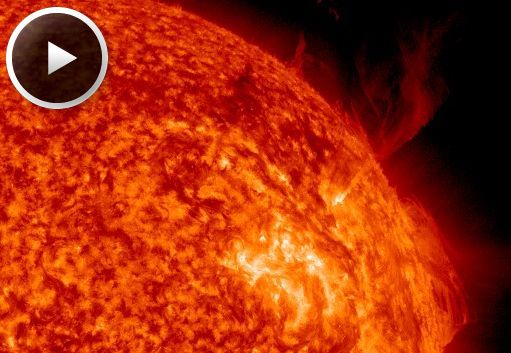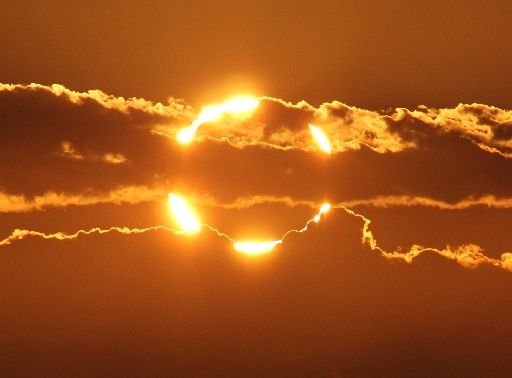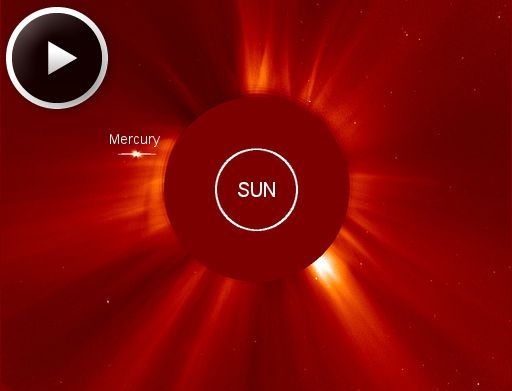When is the best time to see auroras? Where is the best place to go? And how do you photograph them? These questions and more are answered in a new book, Northern Lights - a Guide, by Pal Brekke & Fredrik Broms. | | |
SUNSET PLANETS: Look west at sunset for a loose conjunction between Jupiter and the 10% crescent Moon. Consider it the prelude to a much more dramatic conjunction later this month involving Jupiter, Venus and Jupiter. [full story] [video] [photo gallery]
FILAMENT ERUPTION: An unstable filament of magnetism on the Earthside of the sun erupted during the early hours of May 12th. NASA's Solar Dynamics Observatory recorded the blast:

The erupting filament did not spark a significant solar flare (that is, there was no strong flash of X-radiation), but it did hurl part of itself into space. SOHO photographed a bright coronal mass ejection (CME) emerging from the blast site: movie. The CME could deliver a slight, glancing blow to Earth's magnetic field on May 15th. Aurora alerts: text, voice.
Realtime Space Weather Photo Gallery
FANTASTIC SUNRISE: The sunrise over Australia on Friday, May 10th, was a little ... unusual. Tony O'Brien photographed what happened from a spot south of the town of Newman:

The sun had turned into a "ring of fire" during an annular solar eclipse. At the moment of O'Brien's snapshot, more than 95% of the sun's diameter was covered by the Moon.
"I travelled a full day to see this annular eclipse--and it was worth the trip," he says. "It was a fantastic event."
In an annular eclipse the Moon is not quite big enough to cover the entire solar disk. A blinding ring of solar fire juts out around the Moon, overwhelming the sun's delicate corona. It may not be the same as totality, but annularity has a charm and beauty all its own. Browse the gallery for more images from the eclipse zone.
Realtime Solar Eclipse Photo Gallery
MERCURY EMERGES: For the past few days, Mercury has been passing almost directly behind the sun; now it is emerging from the glare. The Solar and Heliospheric Observatory (SOHO) caught the first planet popping out from behind the opaque disk of the spacecraft's coronagraph on May 12th:

Fleet Mercury is now racing into the evening sky where it will join Venus and Jupiter for a beautiful sunset conjunction later this month. A video from NASA previews the gathering. Until then, the best place to keep track of Mercury is here.
Realtime Space Weather Photo Gallery
Realtime Aurora Photo Gallery
Realtime Comet Photo Gallery
Realtime Noctilucent Cloud Photo Gallery
[previous years: 2003, 2004, 2005, 2006, 2007, 2008, 2009, 2011]

